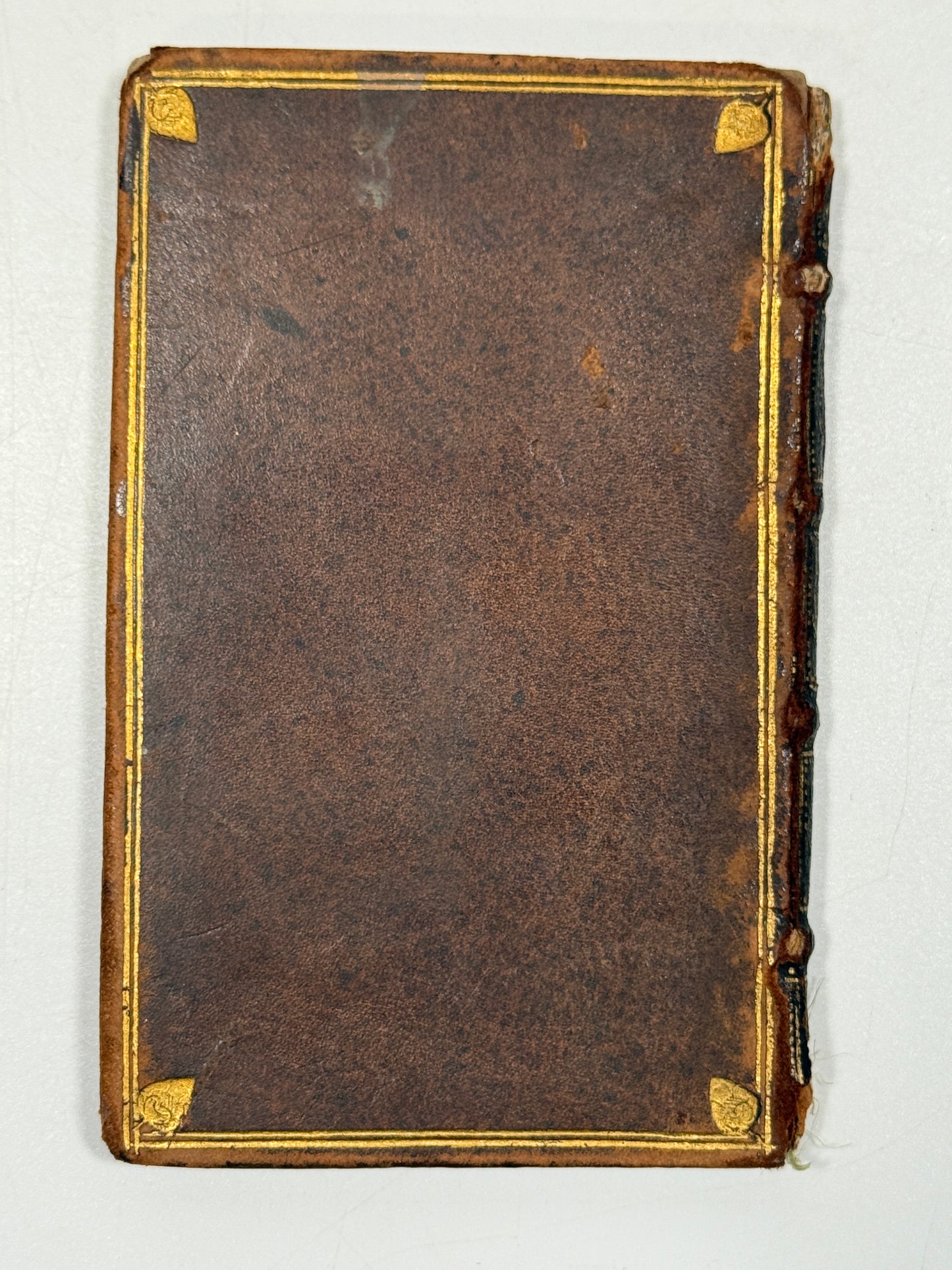Picta Poesis 1564 Barthelemy Aneau
Picta Poesis 1564 Barthelemy Aneau
Couldn't load pickup availability
Picta Poesis. [By Barthelemy Aneau]. Ab authore denuo recognita. Lugduni: Apud Ludovicum et Carolum Pesnor, 1564.
AN IMPORTANT EARLY LYONNAIS EMBLEM BOOK, INCLUDING THE EARLIEST KNOWN DEPICTION OF TENNIS WITH A NET.
-------------------
The Picta Poesis occupies a significant position in the history of French emblem literature. Following the death of Denis Janot in 1544 (the principal Parisian printer of emblem books), the impetus for emblem production shifted decisively to Lyons. Aneau’s Picta Poesis was only the third emblem book by a French author to appear there, preceded solely by Scève’s Délie (itself an exceptional case) and Guillaume Guéroult’s Premier livre des emblemes (1550). First issued by Macé Bonhomme in 1552, Aneau’s emblem book appeared almost simultaneously in this Latin version and in a French translation by the author himself (Imagination poétique).
Aneau’s work stands apart from the earlier Parisian tradition of La Perrière and Corrozet, being far more heavily dependent upon classical rather than quotidian or moralising sources. Nearly half the emblems derive from woodcuts originally designed to illustrate Ovid’s Metamorphoses; while Aneau sometimes retains an allusion to the original Ovidian context, more often he reinvents the image’s meaning entirely, crafting emblems that express universally applicable moral lessons (Saunders, Nottingham French Studies 16 (1977), pp.1-18).
The author’s own account of the book’s origin is revealing: in the preface to the Imagination poétique, Aneau explains that he discovered a set of apparently “useless” woodblocks in the workshop of his friend and publisher Macé Bonhomme, and resolved to give them “new life” by composing texts to accompany them. In fact, several of the blocks had already been used by Bonhomme in his 1550-1551 editions of Clément Marot’s translation of Ovid’s Metamorphoses, and were again used in 1556 for the edition of the first three books, the third translated by Aneau himself. Thus the Picta Poesis offers a fascinating example of Renaissance print culture’s reuse and recontextualisation of visual material to generate new literary meaning (see Cornilliat, L’Esprit créateur 28.2 (1988), pp.78-88).
The present edition, dated 1564 (no priority established with the 1563 issue), was produced by Louis and Charles Pesnot in association with Bonhomme’s heirs. It is the third overall edition of the work, following the 1552 and 1556 printings, and includes 106 emblems, most after the designs of Pierre Eskrich (Cruche). The Picta Poesis was popular enough to warrant this renewed publication, while the French version ran through only two editions.
Of particular note in this 1564 issue is an emblem depicting the game of tennis, showing for the first time a rope stretched across the court, the earliest depiction of tennis with a net. This image, long recognised by sports historians, is an important moment in the visual history of the game’s evolution.
-------------------
Barthélemy Aneau (c.1505-1561) was born in Bourges and spent most of his career in Lyons, where he served as regent and later principal of the Collège de la Trinité between 1538-1551 and again from 1558 until his violent death in 1561 at the hands of a rioting crowd. Aneau was a central figure in the development of the Lyonnais emblem tradition, not only producing his own emblem books but also issuing in 1549 the second French translation of Alciato’s Emblemata, accompanied for the first time by a commentary and an attempted thematic reorganisation of the emblems, an innovation that significantly influenced subsequent editions (Adams, Rawles & Saunders, Bibliography of French Emblem Books, F.084-088).
He moved in the intellectual and artistic circles of Lyons, counting Macé Bonhomme among his closest friends, and participated in civic pageantry such as the 1548 royal entry of Henri II (alongside Maurice Scève). His varied output includes the emblematic Décades de la description des animaux (1549), the prose allegory Alector histoire fabuleuse (1560), the nativity play Pastorale de la Nativité (1539), and the Quintil horatien (1550), a spirited attack on the poetic doctrines of the Pléiade.
-------------------
The 1564 Picta Poesis is rare on the market. A copy appeared at Coutau-Begarie (Paris, 7 February 2010, lot 121), estimated at €8,000–9,000 (EUR). It is also scarce institutionally, only one copy is recorded in UK institutions with no copies recorded in America (via USTC). The BnF has a digitised copy which corresponds to our copy.
-------------------
Size: 72 x 113 mm (approx.)
Condition:
[A-H8, (2)].
Collated as complete, including the printer's device colophon, corresponds to the BnF digitised copy. 18th century full calf gilt, backstrip with some loss, rubbed. Lacks the front board. Inscription dated 1690 to title leaf recto. Text block trimmed occasionally catching the top of the letters of the headline, but without text loss. Mildly toned, else generally bright and clean throughout. A lovely copy internally with the full suite of the fine illustrations.
[USTC 113152; Adams P1162; Pettegree 53195; Baudrier III, 170]
Adams, S., Rawles, S., & Saunders, A., A Bibliography of French Emblem Books, Geneva: Droz, 1999-2002, vol. I, F.085.
Saunders, Alison, ‘The influence of Ovid on a sixteenth-century emblem book: Barthélemy Aneau’s Imagination poétique,’ Nottingham French Studies 16 (1977), 1-18.
Saunders, Alison, ‘The bifocal emblem book: or how to make one work cater for two distinct audiences,’ in Emblems in Glasgow, Glasgow, 1992, pp.113-133.
Cornilliat, François, ‘De l’usage des images muettes: Imagination poétique de Barthélemy Aneau,’ L’Esprit créateur 28.2 (1988), pp.78-88.
See also Alison Saunders, “Barthélemy Aneau’s Picta poesis, Lyons, Macé Bonhomme, 1552,” in French Emblems at Glasgow, University of Glasgow.










































